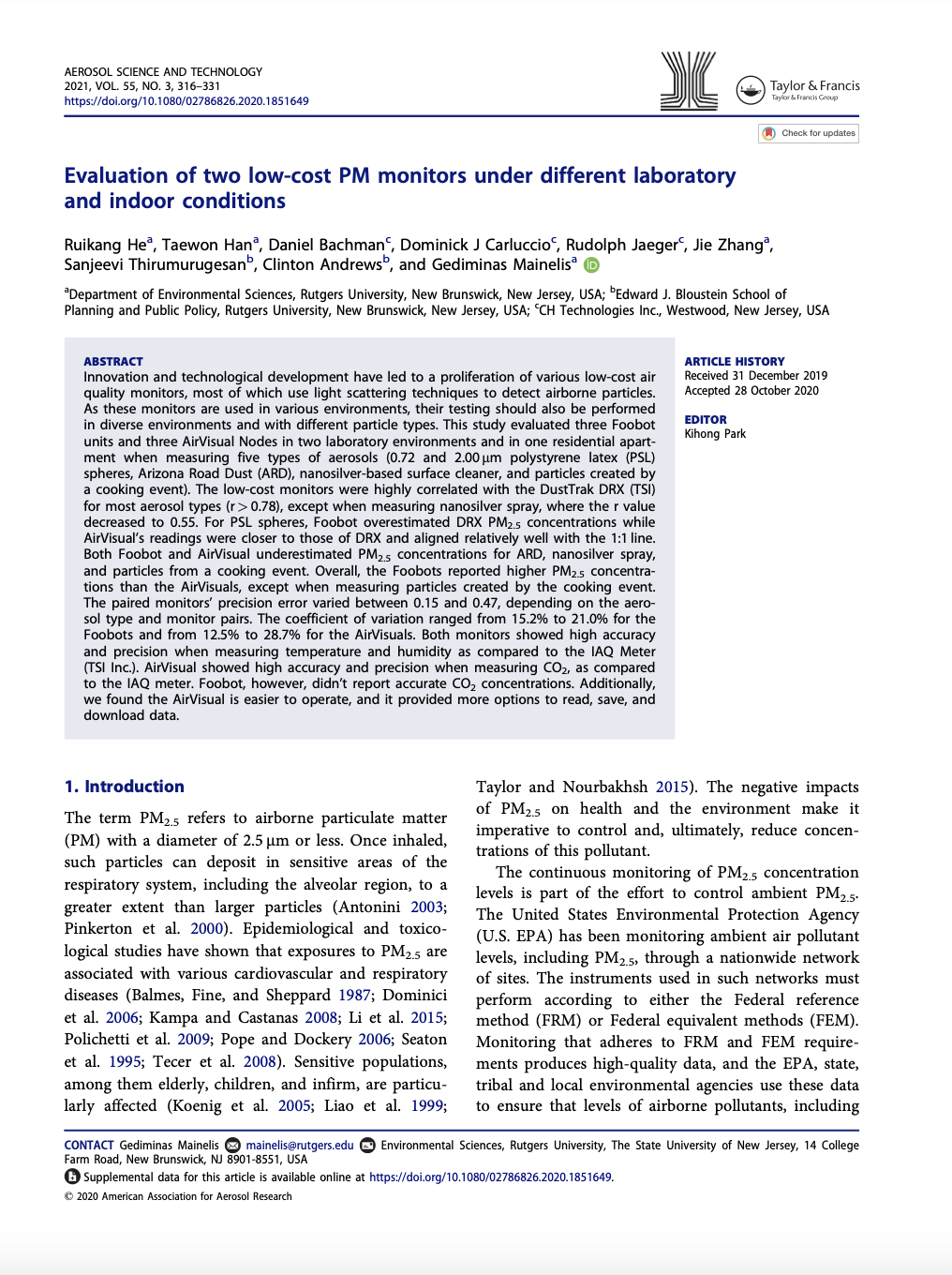Innovation and technological development have led to a proliferation of various low-cost air quality monitors, most of which use light scattering techniques to detect airborne particles. As these monitors are used in various environments, their testing should also be performed in diverse environments and with different particle types. This study evaluated three Foobot units and three AirVisual Nodes in two laboratory environments and in one residential apart- ment when measuring five types of aerosols (0.72 and 2.00mm polystyrene latex (PSL) spheres, Arizona Road Dust (ARD), nanosilver-based surface cleaner, and particles created by a cooking event). The low-cost monitors were highly correlated with the DustTrak DRX (TSI) for most aerosol types (r > 0.78), except when measuring nanosilver spray, where the r value decreased to 0.55. For PSL spheres, Foobot overestimated DRX PM2.5 concentrations while AirVisual’s readings were closer to those of DRX and aligned relatively well with the 1:1 line. Both Foobot and AirVisual underestimated PM2.5 concentrations for ARD, nanosilver spray, and particles from a cooking event. Overall, the Foobots reported higher PM2.5 concentra- tions than the AirVisuals, except when measuring particles created by the cooking event. The paired monitors’ precision error varied between 0.15 and 0.47, depending on the aero- sol type and monitor pairs. The coefficient of variation ranged from 15.2% to 21.0% for the Foobots and from 12.5% to 28.7% for the AirVisuals. Both monitors showed high accuracy and precision when measuring temperature and humidity as compared to the IAQ Meter (TSI Inc.). AirVisual showed high accuracy and precision when measuring CO2, as compared to the IAQ meter. Foobot, however, didn’t report accurate CO2 concentrations. Additionally, we found the AirVisual is easier to operate, and it provided more options to read, save, and download data.
